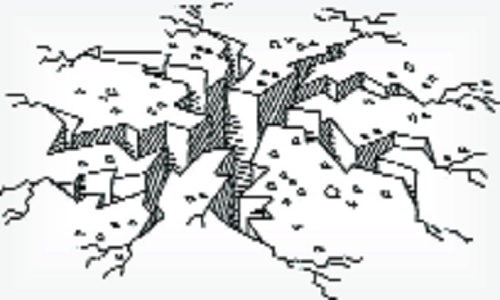Tremors on third consecutive day
| Date :06-May-2024 |

By Kaushik Bhattacharya
“The recent alternate rains in hot weather, groundwater percolation through cracks, fissures in the strata and development of pore pressure may be a reason behind such back-to-back earthquakes in Nagpur district,” Dr Anjan Chatterjee, former Additional Director General, GSI and Former Director Earthquake Geology Division, GSI Central Region, told ‘The Hitavada’. On the third consecutive day, Nagpur district felt tremors of 2.7 magnitude that created panic among citizens on Sunday afternoon. The tremor was felt around 2.28 pm on Sunday near Khapri area which is just a few kilometres away from Nagpur city. According to Dr Chatterjee, the geo-mechanical behaviour with fluid migration through multi-directional cracks and fissures resulted into pore pressure that caused the evolution. “Only field studies could provide authentication. Micro earthquake (MEQ) recorder studies and on-the-spot macro earthquake surveys by experts need to be undertaken. National Centre for Seismology should work on it to find out the exact reason,” Dr Chatterjee added.
The seismic events in and around Nagpur district are taking place since March this year. The first event took place on March 10 of 2.7 magnitude. Thereafter, on March 26 three back-to-back quakes of 2.8 magnitude each were felt in the district. Hingoli, Wardha and Akola districts also felt tremors during these period and now three quakes in Nagpur district have raised concern among experts. Despite so much of panic among citizens, the concerning authorities are yet to release any advisory about the back-to-back seismic events that are taking place in the district. Now, retired geologists and experts are also asking for a study by National Centre for Seismology and GSI in Nagpur district for such events. Whereas, experts are divided on the theories behind such events as Dr Sandeep Shirkhedkar, Earthquake Consultant, believes these activities are taking place near mining areas which are harmless. It may be happening due to blasts in mines.
Whereas, some believe that these events may be taking place due to reactivation of deep located fault in the region. These areas fall in the safe earthquake Zone II denoting least evidences of any seismic history, based on the Bureau of Indian Standards (BIS) seismic zonation map of India. Whereas, Dr Chatterjee believes, “Between 2018 to 2020, Palghar district (Zone III) located atop similar Deccan Trap basalts like Nagpur district, had reported about 10,000 tremors ranging between 0.5 to 4.3 magnitudes with 4 to 12 kms depths of focus. Studies by scientists from the NCS, Delhi and Geophysics Department, Kurukshetra University, have concluded that the swarm activity in Palghar was due to fluid triggering seismicity, in their publication in 2023.” Same study is also needed in Nagpur district as it is also situated over Deccan Trap basalts and witnessing the quake between 5 to 10 kms depths, said Dr Chatterjee.